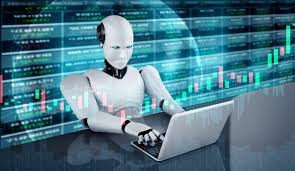In the fast-paced world of foreign exchange (forex) trading, every second counts. Traders constantly seek new ways to gain an edge in this dynamic market where fortunes can be made or lost in the blink of an eye. One such forex robot that has gained significant traction in recent years is the forex robot.
What is a Forex Robot?
Forex robots, also known as expert advisors (EAs), are automated trading systems that execute trades on behalf of traders based on predefined criteria and algorithms. These algorithms are designed to analyze market conditions, identify trading opportunities, and place trades without human intervention.
How Do Forex Robots Work?
Forex robots operate on a set of rules and parameters programmed by their developers. These rules typically include technical indicators, price action patterns, and risk management parameters. Once activated, the robot continuously scans the market for signals that meet its criteria. When a suitable trading opportunity is identified, the robot automatically executes the trade according to the predetermined parameters.
Advantages of Forex Robots
- 24/7 Trading: Unlike human traders who need rest, forex robots can operate around the clock, taking advantage of trading opportunities in different time zones.
- Emotion-Free Trading: Emotions such as fear and greed can cloud judgment and lead to irrational decision-making. Forex robots eliminate this emotional aspect of trading, ensuring disciplined execution of trading strategies.
- Backtesting and Optimization: Before deploying a forex robot in live trading, traders can backtest it using historical data to assess its performance. This allows for fine-tuning and optimization of the robot’s parameters to maximize profitability and minimize risk.
- Speed and Efficiency: Forex robots can analyze market conditions and execute trades much faster than human traders, reducing the risk of missed opportunities or delays in order execution.
- Diversification: With multiple forex robots, traders can diversify their trading strategies across different currency pairs and timeframes, reducing overall risk exposure.
Challenges and Risks
While forex robots offer numerous advantages, they are not without challenges and risks:
- Over-Optimization: Excessive optimization of a forex robot’s parameters based on past data can lead to curve-fitting, where the robot performs well in historical tests but fails to adapt to changing market conditions.
- Lack of Adaptability: Forex robots are only as effective as the algorithms programmed into them. They may struggle to adapt to sudden market changes or unforeseen events that are not accounted for in their programming.
- Technical Issues: Connectivity problems, platform glitches, or data feed errors can disrupt the operation of forex robots, potentially leading to missed trades or unintended losses.
- Market Conditions: While forex robots excel in certain market conditions, such as trending markets with clear patterns, they may struggle in choppy or highly volatile conditions where human discretion and adaptability are crucial.
- Dependency on Developers: The effectiveness of a forex robot depends on the expertise of its developers. Traders must conduct thorough research and due diligence before selecting a robot, as poorly designed or fraudulent robots can result in substantial financial losses.
Conclusion
Forex robots represent a powerful tool for automating trading and enhancing efficiency in the forex market. By leveraging advanced algorithms and automation, traders can streamline their trading processes, minimize emotional biases, and potentially improve profitability. However, it is essential to approach forex robots with caution, acknowledging their limitations and risks while harnessing their potential benefits through rigorous testing, optimization, and ongoing monitoring. With careful selection and prudent risk management, forex robots can be valuable allies in the quest for trading success in the competitive world of forex.
